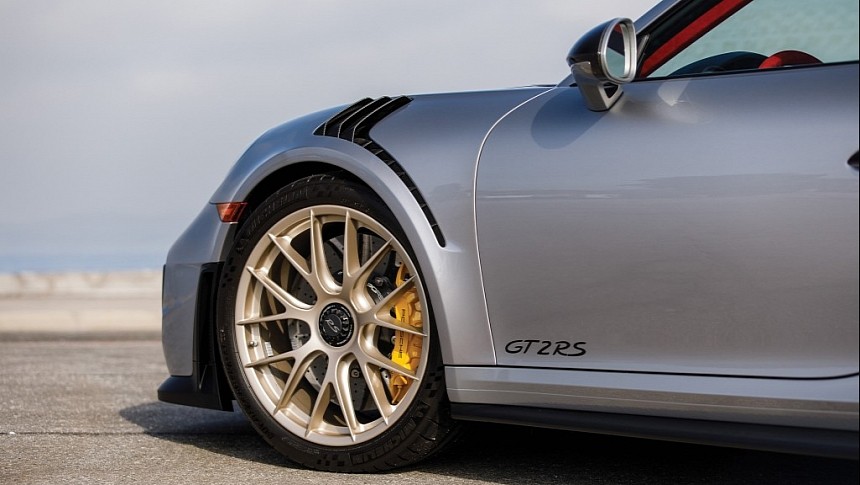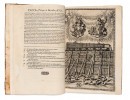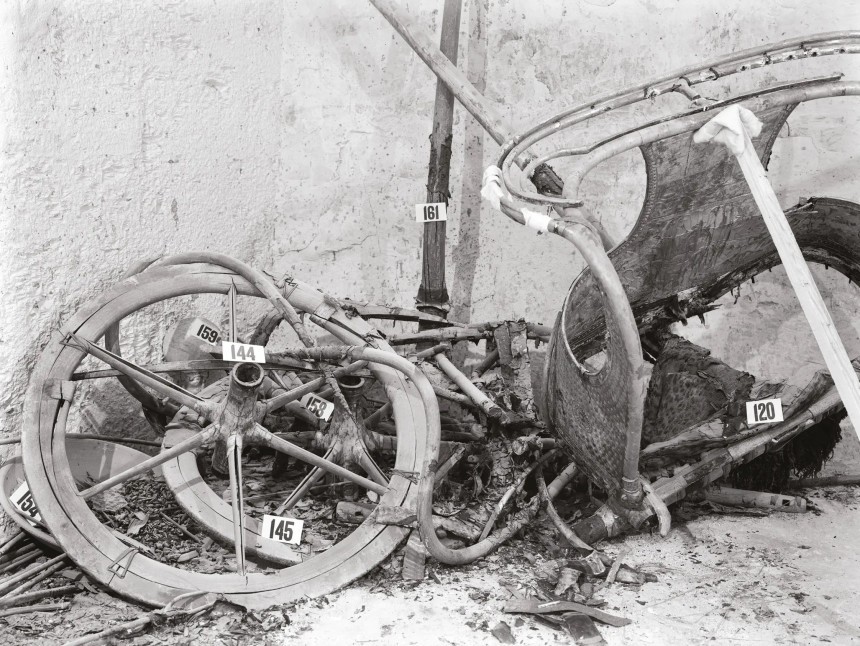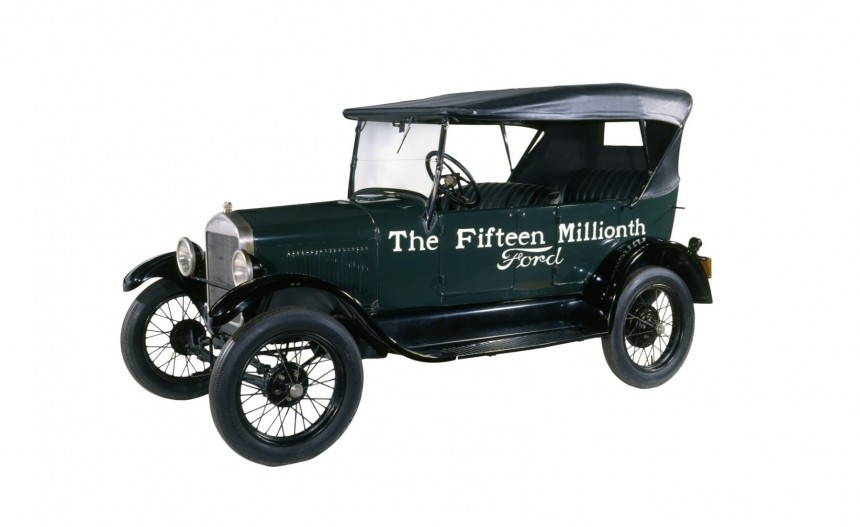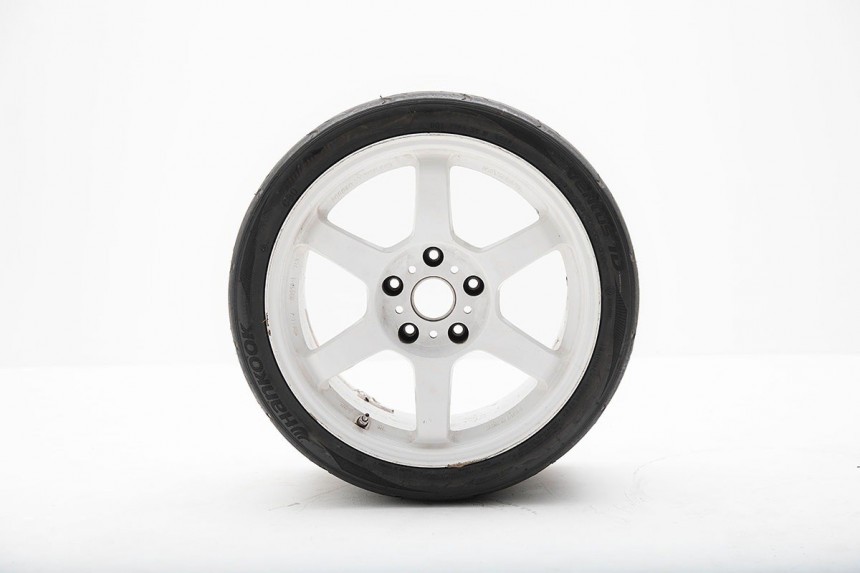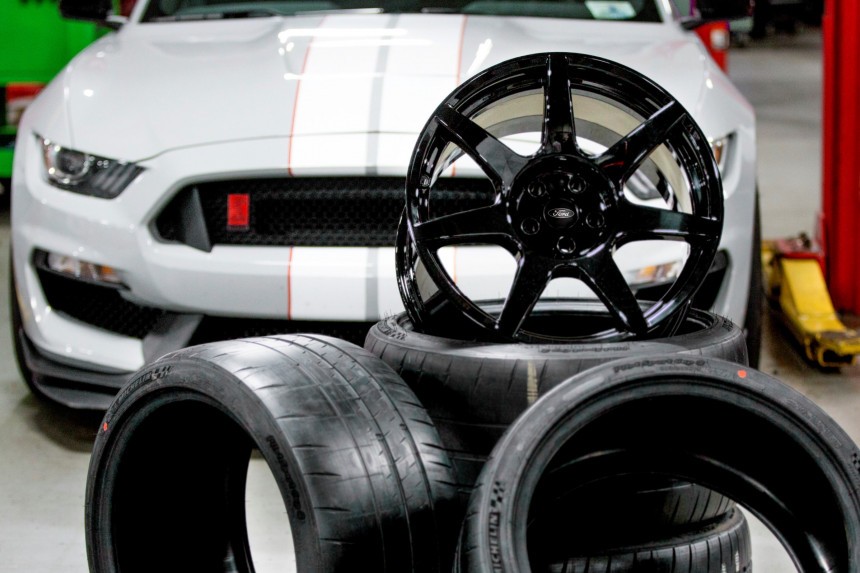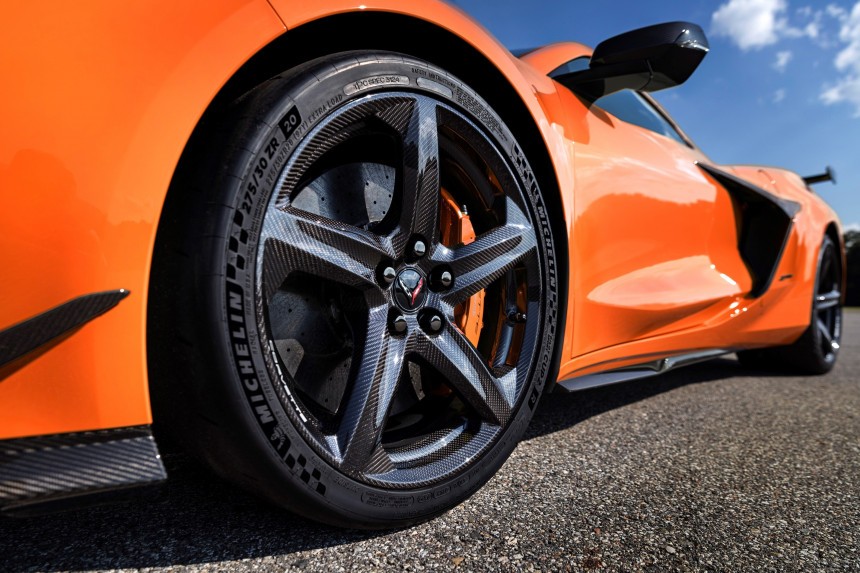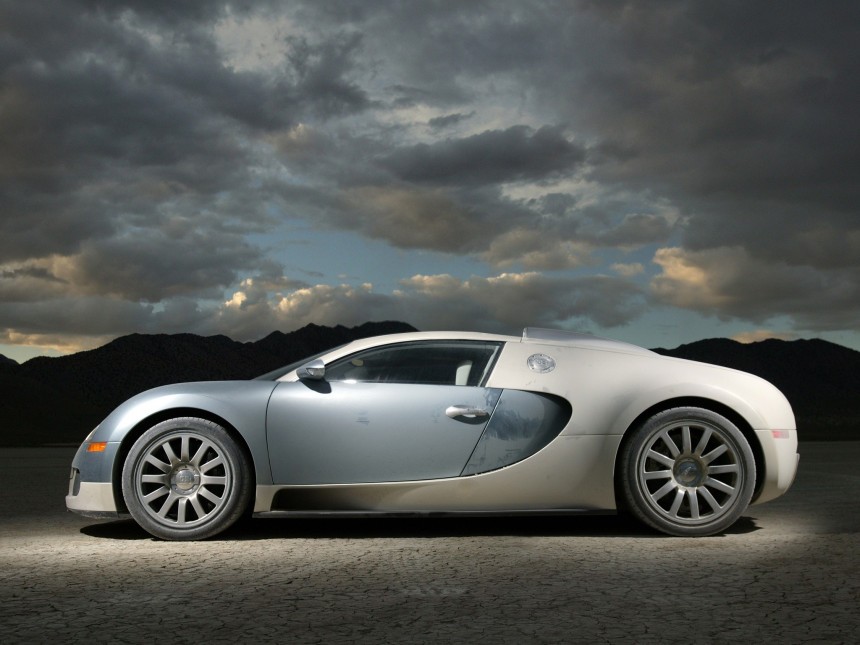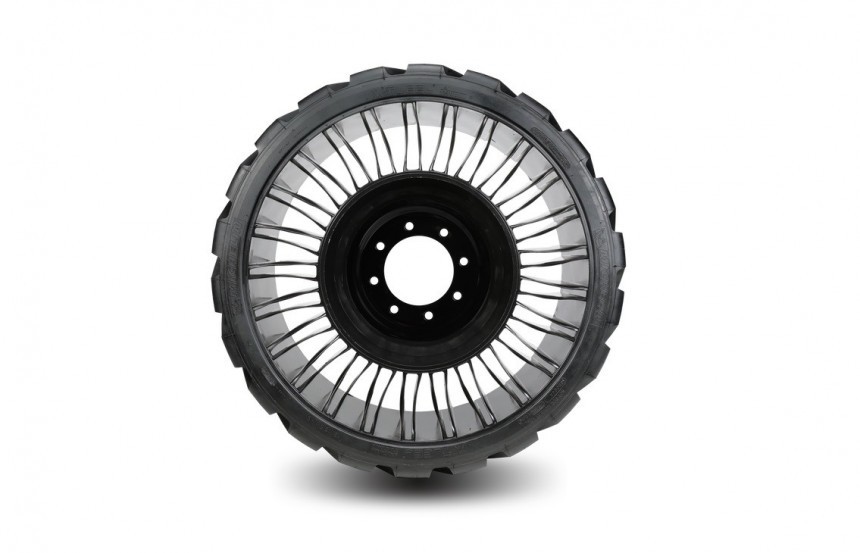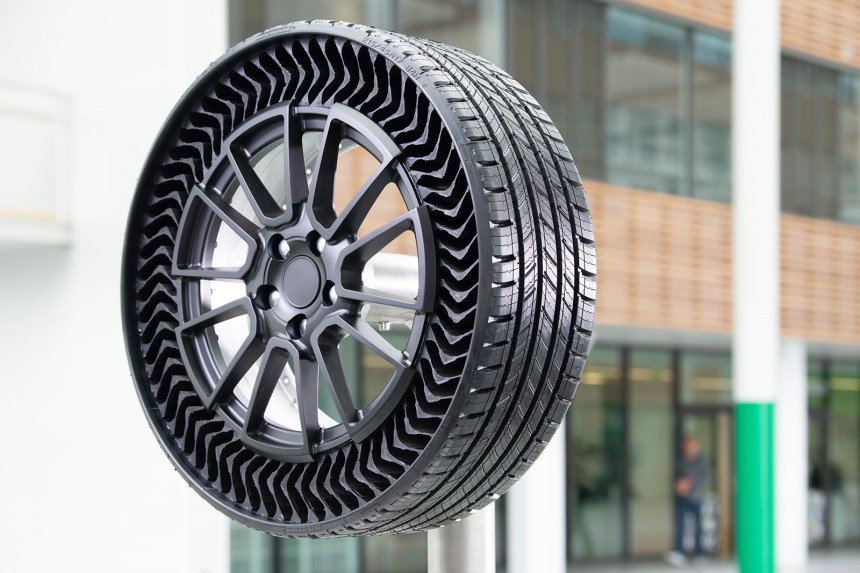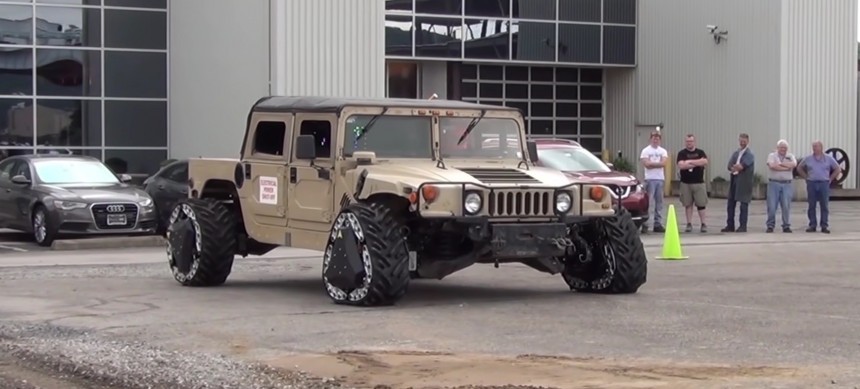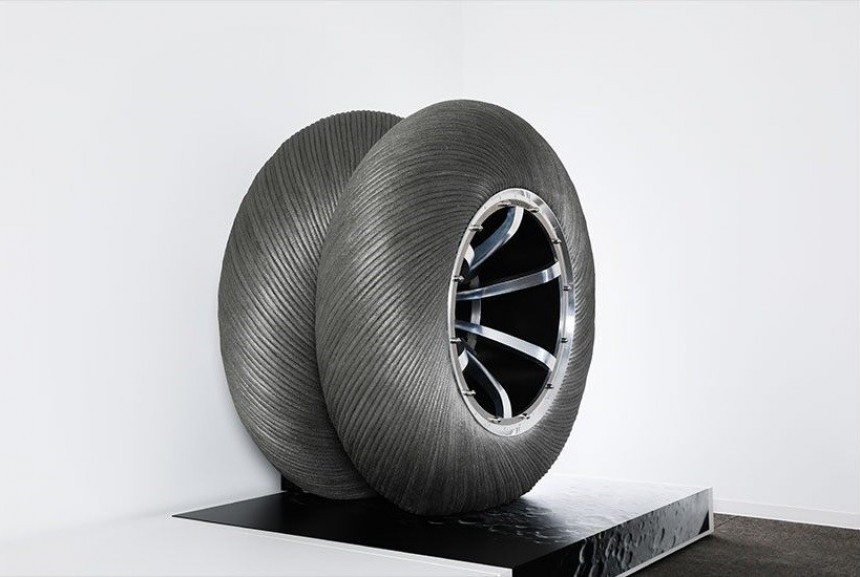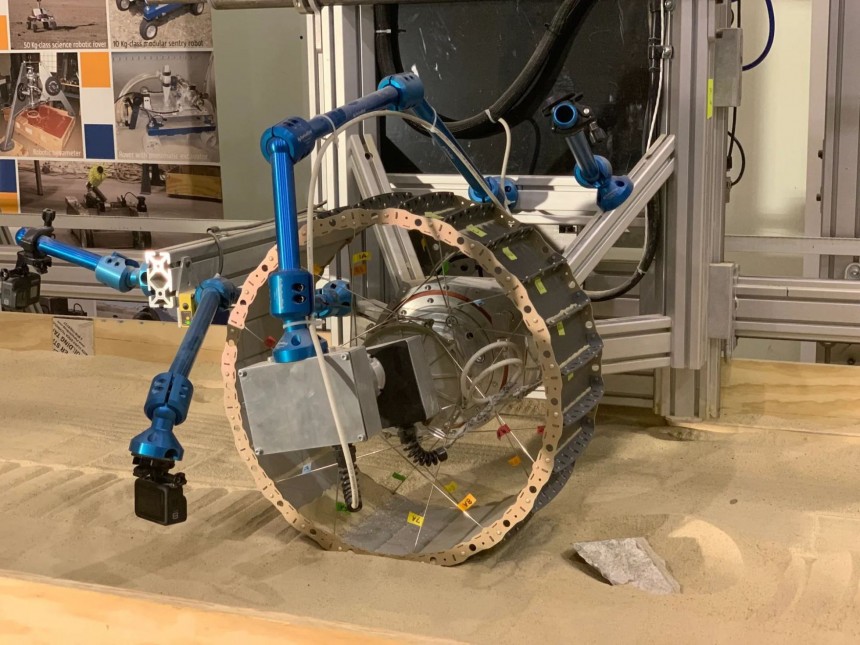Steam engines were instrumental during the First Industrial Revolution, but similar to the wheel, the steam engine was invented long before mass adoption. The wheel, however, is older still. One could further argue that wheels changed the world in more profound ways than steam engines did.
Easily the foremost invention, wheels date back to the 5th millennium before Christ. Although the oldest surviving wheel dates to approximately 3100 before Christ, the wheel is believed to have been invented between 4500 and 4200 BC. Hailing from Mesopotamia, the wheel entered its next phase in the 3500s before Christ with the first wheeled vehicles. The Chinese invented the wheel independently in 2800 BC, then spoke wheels appeared in the region of Anatolia circa 2000 BC.
The Celts used iron-rimmed wheels for their chariots in 1000 before Christ, and the wheelbarrow followed suit in approximately 50 AD. Most peeps believe that the spinning wheel came out during the 11th century in the Islamic world. The roller skate was patented in 1760, yet the earliest reported use of wheeled skates was 1743 on a London stage.
1817 is when German inventor Karl von Drais rolled out (pun intended) the swiftwalker, which is best described as the precursor of the bicycle. Three decades later, the first-ever pneumatic tire was produced in 1847. The wire-spoked wheel came to be in 1869, whereas the 1885 Benz Patent-Motorwagen is regarded as the first automobile.
There is a common misconception that ancient Egyptians used wheeled contraptions to move the heavy limestone blocks that make up the pyramids we all know and love. Rather than wheeled carts, the Egyptians used wooden sleds to transport blocks over wet sand. Wait a minute! What wet sand?
Moistening the sand binds the grains together, making wet sand roughly twice as stiff as dry sand. Obviously enough, wet sand doesn't pile up in front of the sled as badly as dry sand does. Wooden poles and thick ropes were used to move the blocks up massive ramps. There are many alternate theories in regard to pyramid building, but in any case, the Egyptians of that era weren't aware of the wheel.
Roughly 50 men were required to move a 2.5-ton block up a ramp. In ancient Rome, by comparison, the treadwheel crane required only eight men to lift items as heavy as six tons. While on the subject of Rome, the engineer-architect Domenico Fontana used a plethora of ginormous pulleys and rollers to move the Vatican obelisk from its old location at the Circus of Nero to the Piazza of Saint Peter in 1586. Brought to Rome during the reign of Caligula, the obelisk weighs 327 tons (around 721,000 pounds).
The only Egyptian obelisk in Rome that hasn't toppled since it was brought there in 37, the Vatican obelisk was transported a meager 83 meters (275 feet). Including the construction of the wooden tower constructed around the obelisk, the move took a staggering 13 months, 72 horses, and some 900 men. Carved out of red granite, the obelisk is referred to as The Witness because it had stood witness to the upside-down crucifixion of Peter.
In the 1940s, the earliest wheels in America were unearthed in the guise of wheeled toys from pre-Colombian layers of sediment. Be that as it may, the indigenous people of America started using wheels for transportation after the arrival of the Spanish colonizers, beginning with Columbus in 1492.
When it comes to automotive applications, the wheel has gone through many stages in the last 140-odd years. Karl Benz's three-wheeled thingy features bicycle-like wheels with wires holding the rim to the hub. A little over two decades after the unveiling of the Benz Patent-Motorwagen, Joseph Sankey & Sons Ltd patented the "All Steel Wheel," yet series production wouldn't begin until 1910 at Hadley Castle Works in the United Kingdom.
The Ford Motor Company equipped the Model T with artillery-style wooden wheels through 1926, the year FoMoCo introduced steel welded-spoke wheels to the automobile that democratized motoring in the United States of America. Cast wheels appeared in the 1930s. The popularity of magnesium alloy wheels peaked in the 1960s, only to be replaced by aluminum alloy wheels due to the lower cost of aluminum compared to magnesium.
Magnesium has a better strength-to-weight ratio, though, which makes it especially popular with high-performance applications. We also have to remember that magnesium dissipates heat quicker than aluminum, therefore keeping tire temperatures in check. Cadillac offers 18-inch mags on the CT4-V Blackwing and 19-inch units on the CT5-V Blackwing, the GM-owned brand's most exciting sedans. The 4 uses a twin-turbocharged V6 à la the ATS-V before it, whereas the 5 levels up to a supercharged small block that puts out 668 horsepower and 659 pound-feet (893 Nm) of twist.
It should be highlighted that cast wheels are one piece, whereas two-piece wheels are typically forged. There's also the three-piece design, which comprises the centerpiece, and two rim halves. Forged means that a solid block of aluminum alloy is mechanically deformed by a forging press at high temperature, shaping the billet into the desired shape. Forging is way more expensive than casting, hence the far greater popularity of the cast wheel.
As implied, casting means pouring the molten aluminum alloy into a number of molds. Some machining work is required after the casting. Flow forming involves the application of pressure to the inner barrel of a cast wheel while spinning the wheel in question. The flow-forming process both stretches and compresses the aluminum alloy, increasing tensile strength. As far as automotive wheels are concerned, think of flow forming as a hybrid between cast wheels and forged wheels.
If you're in the market for this kind of wheel, don’t be fooled by the so-called rotary forged alternative. Rotary forging is the very same thing as flow forming, but it sounds nicer. Companies such as TSW and Anovia market their flow-formed wheels as rotary-forged wheels. The next step up would be carbon-fiber wheels, a development that entered the mass market with the S550-generation Shelby GT350R. You know, that screamer of a Mustang powered by a flat-plane crankshaft V8 engine.
The carbon-fiber wheels of the GT350R shave off approximately 13 pounds (5.9 kilograms) over the standard aluminum alloy wheels. Much stiffer than the base wheels, the carbon-fiber wheels of the GT350R were produced by Carbon Revolution. This company also produced the CF wheels of the S550-generation Ford Mustang Shelby GT500.
Now-defunct American automaker Mosler offered carbon-fiber-magnesium wheels on the MT900S Photon almost two decades ago. The composite wheels weigh 14 pounds (6.4 kilograms) and 17.5 pounds (8.0 kilograms), respectively, making said wheels more than 10 pounds (4.5 kilometers) lighter than the standard OZ forged aluminum wheels.
Mosler finished two examples of the MT900S Photon, of which the second car improved on the first with an LS7 small block as opposed to the LS6 of the original. While on the subject of carbon-fiber wheels, the eighth-gen Corvette can also be had with carbon-fiber wheels, but only as long as you're fine paying top dollar for the Z06 or the E-Ray.
Before destination charge, the C8 Z06 currently retails at $112,700 for the 1LT Coupe. The advertised 1.22 Gs and 2.6 seconds to 60 miles per hour (97 kilometers per hour) are only possible with the Z07 Performance Package (priced at $8,995), which does not include carbon-fiber wheels.
Also supplied by Australia-based Carbon Revolution, the CFs in question are the tallest and widest carbon-fiber wheels ever produced by Carbon Revolution. The fronts measure 20 by 10 inches, while the rears are listed as 21 by 13 inches. Priced at $11,995 painted, $13,995 for visible carbon fiber, or $15,500 with visible carbon fiber and red striping, said wheels promise a 41-pound (18.6-kilogram) reduction in unsprung weight.
Unsprung weight is the weight of the parts that aren't supported by the vehicle's suspension. Think tires, wheels, wheel hubs, the brake calipers and pads, and axles. Revealed in January 2023, the E-Ray can be had with the very same CFs as well.
The indirect successor of the Grand Sport retails at $104,900 for the 1LZ Coupe and packs a free-breathing small block rather than the flat-plane crankshaft V8 of the Z06. But in combination with the front-mounted electric motor, it's quicker to 60 miles per hour and in the quarter mile. GM quotes 2.5 and 10.5 seconds, respectively, and believe it or not, the self-charging hybrid can be driven 4 miles (6.4 kilometers) in Stealth all-electric mode despite having a relatively small battery pack (1.9 kWh).
The Michelin PAX system also deserves a few paragraphs. Developed in the 1990s, but coming to prominence in the 2000s with the introduction of the Bugatti Veyron EB 16.4, the PAX system implies a semi-rigid ring on the rim. The ring allows for emergency operation at limited speeds with no air pressure whatsoever. PAX-specific tires feature much stiffer sidewalls and a special bead construction. In the Veyron's first years of production, owners had to ship their cars to the Bugatti factory in France for tire replacement.
The Volkswagen-owned automaker X-rays the wheels after every tire replacement (every 18 months or 2,500 miles/4,000 kilometers). The OZ wheels have to be replaced every two tire replacement due to bead seal integrity concerns at high speed. Lest we forget, the Veyron Super Sport is electronically limited to 258 miles per hour (415 kilometers per hour). In the hands of test driver Pierre Henri Raphanel, a derestricted Veyron Super Sport was clocked at 269.806 mph (434.211 kph).
The Chiron, however, can do better. The French automaker squeezed out 304.773 miles per hour (490.484 kilometers per hour) from the Chiron Super Sport 300+ at the Ehra-Lessien facility in Germany. At the moment of writing, the ultra-limited Bugatti Chiron Super Sport 300+ still is the world's fastest production car. Also worthy of note, the Chiron does away with the unnecessarily complicated Michelin PAX system of the Veyron. The wheels are lifetime parts, and the tires are far more affordable compared to the Veyron's tires.
Having talked about Michelin's high-speed rubber, it would be a shame for us to ignore the French manufacturer's Tweel family of airless radial tires. Tweel is a portmanteau of tire and wheel. Designed to perform like a pneumatic tire, the Tweel replaces a given vehicle's factory tire and wheel assembly.
Ideal for agricultural and industrial applications, the Tweel comprises a molded rubber tread on a shear band, poly-resin spokes that absorb impact forces and support the vehicle's weight, and a two-piece reinforced hub that connects the wheel to the axle. Although the Tweel was developed with suspension-less vehicles in mind, both the military and General Motors have tested this technology.
Military testing revealed better mine blast deflection performance compared to conventional tires. Regarding the Detroit-based automaker, General Motors started testing a derivative of the Michelin Tweel in 2020. Dubbed Uptis, the airless tires in question are supposed to become available on an unspecified number of GM models in 2024.
As of February 2024, the largest American automaker of the Detroit Big Three still hasn't adopted the Uptis. General Motors started real-world testing in late 2019 on a fleet of Bolts, which is particularly interesting because GM pulled the plug on the Bolt EV and EUV at the end of 2023.
Uptis is the short way of saying Unique Puncture-proof Tire System. As opposed to the Tweel, the Uptis uses an aluminum wheel. The Uptis further boasts rubber and fiberglass reinforced resin spokes. The question is, why would any OEM switch from pneumatic tires to airless tires in the near future?
Both General Motors and Michelin understand that reducing the use of raw materials, a reduction in irregular wear and tear caused by under- or over-inflation, and the lack of tire pressure monitoring sensors make this design an interesting alternative to the current mass-market tire technologies. Be that as it may, it remains to be seen if the Uptis will see mass-market adoption by the end of the decade.
Stemming from the DARPA GXV-T program, the Reconfigurable Wheel-Track is another futuristic wheel design. Filed by Carnegie Mellon University with the US Patent and Trademark Office in 2020, the RWT is a mechanism that allows a wheel to transform into a track and vice-versa on the fly.
Carnegie demonstrated the RWT in 2018 with the help of a Humvee four-door military truck. The instant improvement of tactical mobility and maneuverability on a wide range of terrains is uncontested, but on the other hand, the RWT is way too complex compared to more conventional military-spec wheels and tires. The articulated spokes within the RWT's wheel housing are most prone to being damaged by explosives or bullets.
The Reconfigurable Wheel-Track's articulated spokes morph from a round wheel to a triangular track in two seconds. Pittsburgh-based Carnegie gave the hub a triangular profile to maximize the contact patch between the RWT and the ground. The hub is completely stationary in track mode.
After years of dominance in Formula 1 in Rosso Corsa, the folks at Bridgestone are now dreaming of sending their tires into outer space. A completely different animal from the Formula 1 tires used by Ferrari in the Michael Schumacher era, the Bridgestone Lunar Cruiser Tire doesn't use rubber.
Considering the cosmic ray radiation and extreme temperatures on the Moon, the Japanese manufacturer decided on a clever structure with an elastic metal skeleton construction. Bridgestone decided on a double-tire structure for the Lunar Cruiser because the Moon's surface is covered in fine sandy deposits. A high contact pressure would result in the wheels getting buried in the regolith.
The all-metal tires are encased in a steel wool-like tread made from a particularly elastic metal. Bridgestone says it was inspired by camels, which feature a unique foot structure. The flat, leathery pads prevent camels from sinking into fine sand.
Developed by the Japan Aerospace Exploration Agency and Toyota, the Lunar Cruiser has a smaller brother in the form of the Volatiles Investigating Polar Exploration Rover. Just like Bridgestone's all-metal wheel, the NASA VIPER team decided on an all-metal design as well. The wheels can be lifted independently in case of extremely fine regolith.
The mid-sized rover employs four wheel modules with active suspension and independent steering. That, in turn, means that the VIPER can be driven sideways or diagonally without changing the way the lunar rover is facing. It can also spin in a circle, which reminds us of Rivian's Tank Turn and the G-Turn feature of the G-Wagen's all-electric cousin.
If everything goes according to plan, a SpaceX Falcon Heavy will deliver the VIPER to the lunar surface in late 2024. The Volatiles Investigating Polar Exploration Rover will spend 100 days at the South Pole of the Moon. It's equipped with a drill to retrieve lunar soil samples, whereas the onboard science toolkit can analyze the collected samples for potentially accessible resources such as water.
The Celts used iron-rimmed wheels for their chariots in 1000 before Christ, and the wheelbarrow followed suit in approximately 50 AD. Most peeps believe that the spinning wheel came out during the 11th century in the Islamic world. The roller skate was patented in 1760, yet the earliest reported use of wheeled skates was 1743 on a London stage.
1817 is when German inventor Karl von Drais rolled out (pun intended) the swiftwalker, which is best described as the precursor of the bicycle. Three decades later, the first-ever pneumatic tire was produced in 1847. The wire-spoked wheel came to be in 1869, whereas the 1885 Benz Patent-Motorwagen is regarded as the first automobile.
Moistening the sand binds the grains together, making wet sand roughly twice as stiff as dry sand. Obviously enough, wet sand doesn't pile up in front of the sled as badly as dry sand does. Wooden poles and thick ropes were used to move the blocks up massive ramps. There are many alternate theories in regard to pyramid building, but in any case, the Egyptians of that era weren't aware of the wheel.
Roughly 50 men were required to move a 2.5-ton block up a ramp. In ancient Rome, by comparison, the treadwheel crane required only eight men to lift items as heavy as six tons. While on the subject of Rome, the engineer-architect Domenico Fontana used a plethora of ginormous pulleys and rollers to move the Vatican obelisk from its old location at the Circus of Nero to the Piazza of Saint Peter in 1586. Brought to Rome during the reign of Caligula, the obelisk weighs 327 tons (around 721,000 pounds).
In the 1940s, the earliest wheels in America were unearthed in the guise of wheeled toys from pre-Colombian layers of sediment. Be that as it may, the indigenous people of America started using wheels for transportation after the arrival of the Spanish colonizers, beginning with Columbus in 1492.
When it comes to automotive applications, the wheel has gone through many stages in the last 140-odd years. Karl Benz's three-wheeled thingy features bicycle-like wheels with wires holding the rim to the hub. A little over two decades after the unveiling of the Benz Patent-Motorwagen, Joseph Sankey & Sons Ltd patented the "All Steel Wheel," yet series production wouldn't begin until 1910 at Hadley Castle Works in the United Kingdom.
Magnesium has a better strength-to-weight ratio, though, which makes it especially popular with high-performance applications. We also have to remember that magnesium dissipates heat quicker than aluminum, therefore keeping tire temperatures in check. Cadillac offers 18-inch mags on the CT4-V Blackwing and 19-inch units on the CT5-V Blackwing, the GM-owned brand's most exciting sedans. The 4 uses a twin-turbocharged V6 à la the ATS-V before it, whereas the 5 levels up to a supercharged small block that puts out 668 horsepower and 659 pound-feet (893 Nm) of twist.
It should be highlighted that cast wheels are one piece, whereas two-piece wheels are typically forged. There's also the three-piece design, which comprises the centerpiece, and two rim halves. Forged means that a solid block of aluminum alloy is mechanically deformed by a forging press at high temperature, shaping the billet into the desired shape. Forging is way more expensive than casting, hence the far greater popularity of the cast wheel.
As implied, casting means pouring the molten aluminum alloy into a number of molds. Some machining work is required after the casting. Flow forming involves the application of pressure to the inner barrel of a cast wheel while spinning the wheel in question. The flow-forming process both stretches and compresses the aluminum alloy, increasing tensile strength. As far as automotive wheels are concerned, think of flow forming as a hybrid between cast wheels and forged wheels.
If you're in the market for this kind of wheel, don’t be fooled by the so-called rotary forged alternative. Rotary forging is the very same thing as flow forming, but it sounds nicer. Companies such as TSW and Anovia market their flow-formed wheels as rotary-forged wheels. The next step up would be carbon-fiber wheels, a development that entered the mass market with the S550-generation Shelby GT350R. You know, that screamer of a Mustang powered by a flat-plane crankshaft V8 engine.
The carbon-fiber wheels of the GT350R shave off approximately 13 pounds (5.9 kilograms) over the standard aluminum alloy wheels. Much stiffer than the base wheels, the carbon-fiber wheels of the GT350R were produced by Carbon Revolution. This company also produced the CF wheels of the S550-generation Ford Mustang Shelby GT500.
Mosler finished two examples of the MT900S Photon, of which the second car improved on the first with an LS7 small block as opposed to the LS6 of the original. While on the subject of carbon-fiber wheels, the eighth-gen Corvette can also be had with carbon-fiber wheels, but only as long as you're fine paying top dollar for the Z06 or the E-Ray.
Before destination charge, the C8 Z06 currently retails at $112,700 for the 1LT Coupe. The advertised 1.22 Gs and 2.6 seconds to 60 miles per hour (97 kilometers per hour) are only possible with the Z07 Performance Package (priced at $8,995), which does not include carbon-fiber wheels.
Also supplied by Australia-based Carbon Revolution, the CFs in question are the tallest and widest carbon-fiber wheels ever produced by Carbon Revolution. The fronts measure 20 by 10 inches, while the rears are listed as 21 by 13 inches. Priced at $11,995 painted, $13,995 for visible carbon fiber, or $15,500 with visible carbon fiber and red striping, said wheels promise a 41-pound (18.6-kilogram) reduction in unsprung weight.
Unsprung weight is the weight of the parts that aren't supported by the vehicle's suspension. Think tires, wheels, wheel hubs, the brake calipers and pads, and axles. Revealed in January 2023, the E-Ray can be had with the very same CFs as well.
The indirect successor of the Grand Sport retails at $104,900 for the 1LZ Coupe and packs a free-breathing small block rather than the flat-plane crankshaft V8 of the Z06. But in combination with the front-mounted electric motor, it's quicker to 60 miles per hour and in the quarter mile. GM quotes 2.5 and 10.5 seconds, respectively, and believe it or not, the self-charging hybrid can be driven 4 miles (6.4 kilometers) in Stealth all-electric mode despite having a relatively small battery pack (1.9 kWh).
The Volkswagen-owned automaker X-rays the wheels after every tire replacement (every 18 months or 2,500 miles/4,000 kilometers). The OZ wheels have to be replaced every two tire replacement due to bead seal integrity concerns at high speed. Lest we forget, the Veyron Super Sport is electronically limited to 258 miles per hour (415 kilometers per hour). In the hands of test driver Pierre Henri Raphanel, a derestricted Veyron Super Sport was clocked at 269.806 mph (434.211 kph).
The Chiron, however, can do better. The French automaker squeezed out 304.773 miles per hour (490.484 kilometers per hour) from the Chiron Super Sport 300+ at the Ehra-Lessien facility in Germany. At the moment of writing, the ultra-limited Bugatti Chiron Super Sport 300+ still is the world's fastest production car. Also worthy of note, the Chiron does away with the unnecessarily complicated Michelin PAX system of the Veyron. The wheels are lifetime parts, and the tires are far more affordable compared to the Veyron's tires.
Ideal for agricultural and industrial applications, the Tweel comprises a molded rubber tread on a shear band, poly-resin spokes that absorb impact forces and support the vehicle's weight, and a two-piece reinforced hub that connects the wheel to the axle. Although the Tweel was developed with suspension-less vehicles in mind, both the military and General Motors have tested this technology.
Military testing revealed better mine blast deflection performance compared to conventional tires. Regarding the Detroit-based automaker, General Motors started testing a derivative of the Michelin Tweel in 2020. Dubbed Uptis, the airless tires in question are supposed to become available on an unspecified number of GM models in 2024.
Uptis is the short way of saying Unique Puncture-proof Tire System. As opposed to the Tweel, the Uptis uses an aluminum wheel. The Uptis further boasts rubber and fiberglass reinforced resin spokes. The question is, why would any OEM switch from pneumatic tires to airless tires in the near future?
Both General Motors and Michelin understand that reducing the use of raw materials, a reduction in irregular wear and tear caused by under- or over-inflation, and the lack of tire pressure monitoring sensors make this design an interesting alternative to the current mass-market tire technologies. Be that as it may, it remains to be seen if the Uptis will see mass-market adoption by the end of the decade.
Carnegie demonstrated the RWT in 2018 with the help of a Humvee four-door military truck. The instant improvement of tactical mobility and maneuverability on a wide range of terrains is uncontested, but on the other hand, the RWT is way too complex compared to more conventional military-spec wheels and tires. The articulated spokes within the RWT's wheel housing are most prone to being damaged by explosives or bullets.
The Reconfigurable Wheel-Track's articulated spokes morph from a round wheel to a triangular track in two seconds. Pittsburgh-based Carnegie gave the hub a triangular profile to maximize the contact patch between the RWT and the ground. The hub is completely stationary in track mode.
Considering the cosmic ray radiation and extreme temperatures on the Moon, the Japanese manufacturer decided on a clever structure with an elastic metal skeleton construction. Bridgestone decided on a double-tire structure for the Lunar Cruiser because the Moon's surface is covered in fine sandy deposits. A high contact pressure would result in the wheels getting buried in the regolith.
The all-metal tires are encased in a steel wool-like tread made from a particularly elastic metal. Bridgestone says it was inspired by camels, which feature a unique foot structure. The flat, leathery pads prevent camels from sinking into fine sand.
The mid-sized rover employs four wheel modules with active suspension and independent steering. That, in turn, means that the VIPER can be driven sideways or diagonally without changing the way the lunar rover is facing. It can also spin in a circle, which reminds us of Rivian's Tank Turn and the G-Turn feature of the G-Wagen's all-electric cousin.
If everything goes according to plan, a SpaceX Falcon Heavy will deliver the VIPER to the lunar surface in late 2024. The Volatiles Investigating Polar Exploration Rover will spend 100 days at the South Pole of the Moon. It's equipped with a drill to retrieve lunar soil samples, whereas the onboard science toolkit can analyze the collected samples for potentially accessible resources such as water.
